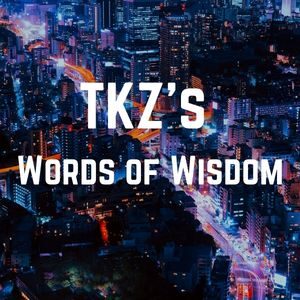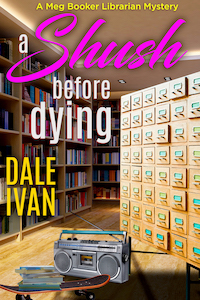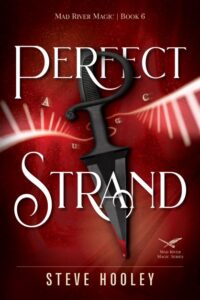Protagonists, antagonists and supporting characters– without some version of each, it would be very difficult to write a thriller, and even harder to write a murder mystery. Protagonists must tackle the obstacles they face, with strength of will, usually sooner rather than later. Antagonists must throw up roadblocks; oppose, fight, scheme, betray, whatever it takes to get what they want, depending upon the character. Let’s not forget supporting characters—both protagonists and antagonists need them.
In today’s Words of Wisdom, James Scott Bell discusses that strength of will every protagonist needs, while Jodie Renner dives into creating a fascinating, believable antagonist. Finally, Joe Moore talks about the challenge of removing a character you realize is unnecessary to your novel. This last was something I had to do with my most recent novel, erasing no fewer than three supporting characters, because each turned out to be unnecessary.
As always, it’s worth reading the full posts, which are date-linked from their respective excerpts.

There is no novel, no drama, no conflict, no story without a Lead character fighting a battle through the exercise of his will.
As Lajos Egri states in his classic, The Art of Dramatic Writing:
A weak character cannot carry the burden of protracted conflict in a play. He cannot support a play. We are forced, then, to discard such a character as a protagonist … the dramatist needs not only characters who are willing to put up a fight for their convictions. He needs characters who have the strength, the stamina, to carry this fight to its logical conclusion.
Let’s think about Scarlett O’Hara for a moment. Do we want 200 pages of her sitting on her porch flirting with the local boys? Do we want to listen to her selfish prattle or watch her flit around in big-hoop dresses?
I’m not sure we want anything to do with her at all after seven pages or so, but then! She learns that Ashley Wilkes, her ideal, her dream husband-to-be, is going to marry that mousy Melanie!
She immediately lays plans to get him alone at the big barbecue. She’ll tell him of her love and he’ll dump Melanie. Through strength of will she draws him into a room where they can be alone.
Only her plan does not work out as intended. Which is good! For strength of will must be met with further obstacles and challenges and setbacks. The protagonist has to keep fighting, or the book is over.
That’s why, after the setback with Ashley, Scarlett faces a further complication—a little thing I like to call the Civil War.
For the rest of the book Scarlett will have to show strength of will to save the family home and fight for the man she loves (NOTE: strength of will does not always mean strength of insight. Scarlett does not realize until it’s too late who she really loves. Of course, we could have told her. It’s the guy who looks like Clark Gable!)
Now, a character can start passive. But she cannot stay there for long. In Stephen King’s Rose Madder, the opening chapter depicts a wife who is horribly abused by her psycho husband. The chapter ends with the chilling line: Rose McClendon Daniels slept within her husband’s madness for nine more years.
Wise storyteller that he is, King does not give us more pages of abuse. No, he quickly gets us to a blood stain. It’s what Rose sees on a sheet as she makes the bed one morning, a reminder of her most recent beating. Nothing she hasn’t seen before, only this time it triggers something inside her:
She looked at the spot of blood, feeling unaccustomed resentment throbbing in her head, feeling something else, a pins-and-needles tingle, not knowing this was the way you felt when you finally woke up.
Then comes Rose’s strength of will. She finally does what her husband has strictly forbidden—leave the house. Do that, he warns, and I’ll track you down and kill you.
For us, walking out a door is a small thing, but for Rose Daniels it is the biggest risk of her life. But she does it.
And that’s why we want to watch her for the rest of the book. She will have to exercise her will many times in order to survive.
James Scott Bell—October 25, 2015
To pose a credible, significant threat and cause readers to worry, your antagonist should be as clever, powerful, and determined as your protagonist. Challenges and troubles are what make your main character intriguing, compel her to be the best she can be. They force her to draw on resources she never knew she had in order to survive, defeat evil, or attain her goals.
For today’s post, we’ll assume your antagonist is a villain – a mean, even despicable, destructive character we definitely don’t want to root for. He needs to be a formidable obstacle to the protagonist’s goals or a menace to the hero’s loved ones or other innocents. And thrillers, fantasy, and horror require really frightening, nasty villains.
Most of the bad guys in movies and books want the same thing: power. Or maybe revenge or riches. And they don’t care who gets hurt along the way. Or worse, they enjoy causing pain, even torturing their victims.
The antagonist needs to be powerful, a game-changer. As Chuck Wendig says in his excellent blog post “25 Things You Should Know About Antagonists,” “The antagonist is there to push and pull the sequence of events into an arrangement that pleases him. He makes trouble for the protagonist. He is the one upping the stakes. He is the one changing the game and making it harder.”
The protagonist and antagonist have clashing motivations. Their needs, values, and desires are at odds. The antagonist and protagonist could have completely opposite backgrounds and personalities for contrast – or be uncomfortably similar, to show how close the protagonist came or could come to passing over to the dark side.
Most readers are no longer intrigued by “mwoo-ha-ha,” all-evil antagonists, like Captain Hook in Peter Pan. Unless you’re writing middle-grade fiction, be sure your villain isn’t unexplainably horrid, evil for the sake of evil. Today’s sophisticated readers are looking for an antagonist who’s more complex, realistic, and believable.
Chuck Wendig suggests antagonists should be depicted as real people with real problems: “People with wants, needs, fears, motivations. People with families and friends and their own enemies. They’re full-blooded, full-bodied characters. They’re not single-minded villains twirling greasy mustaches.”
For a believable, fascinating antagonist or villain, try to create a unique, memorable bad guy of a type that hasn’t been done to death. Try to give him or her an original background and voice.
Remember that the antagonist is the hero of his own story. He thinks he’s right. He justifies his actions somehow, whether it’s revenge, a thirst for power, ridding society of undesirables, or payback. He may even feel he has a noble or just goal, as in the serial killer of prostitutes.
Jodie Renner—March 9, 2015
Lynn and I write thrillers with complex plots, and THE PHOENIX APOSTLES is turning out to be the most complex of all. Because of the complexity, we have some really intense brainstorming sessions, especially as we approach the end of the book and must tie all the loose ends together so they are resolved for the reader. Our conference calls go on for hours as we play “what if”, argue, plot, and strategize. Since we live over 300 miles apart and only meet once or twice a year, we rely on unlimited long distance calling to work out the details.
Recently, we were discussing how each of our characters would resolve at the climax of the book. We both like big Hollywood endings, and this one is shaping up to be a whopper. We were going down the list of ever character, either signing their death warrants or letting them live another day. We knew what should happen to Carlos, but when we got to Teresa, we came up short. As a matter of fact, we couldn’t even justify placing her in the final scene. Normally, we assign all our characters “jobs” in each scene, and she was pretty much unemployed by the time the shit hit the fan.
There was a long silence on the phone. Then Lynn asked that dreaded question no self-respecting fictional character ever wants to hear. “Do we really need her?”
“You mean in the climax?”
“No, in the book?”
After another long pause, I had to admit she was right. If Teresa vanished from the pages of our novel, would it make any difference? The reluctant but honest answer was, no.
We came to the conclusion that we could convert all of Teresa’s “jobs” into the Carlos character and the result would be a tighter, crisper story with fewer heads to hop between.
And so the killing began.
Within a few hours, I had gone through the entire manuscript, found every instance of Teresa’s character, rewrote each one and shifting her responsibilities, motivations, and character development to Carlos. By sundown, Teresa was pronounced dead. Worse than dead; like some former Soviet government official who fell out of favor, she simply ceased to exist.
I had lived with Teresa for over a year. I knew her wants and needs. I liked her. But I had to sacrifice her to make for a better story. I mourned her passing, drank some whisky, and moved on.
R.I.P Teresa Castillo.
Joe Moore—July 1, 2009
***
There you have it, advice dealing with protagonists, antagonists and unnecessary characters.
- How have you shown your protagonist’s strength of will? Do you have a favorite example from fiction or film of this in action?
- How do you like to bring your antagonist to life? What’s the most fun aspect of creating an antagonist for you?
- Have you ever had to erase a character from one of your novels or stories? How much work was it? Any advice?
***

Brand-new librarian Meg Booker is just supposed to be checking out books.
Instead, it’s the patrons who are being checked out–permanently.
A Shush Before Dying, the first book in my new cozy library mystery series set in the 1980s, is now out, and available in ebook and print.




 The Malice Domestic mystery conference is honoring me with the Lifetime Achievement Award for Malice 36 April 26-28, 2024. Malice Domestic is an annual fan convention in Bethesda, Maryland. I’m thrilled to be part of a star-studded line-up next year.
The Malice Domestic mystery conference is honoring me with the Lifetime Achievement Award for Malice 36 April 26-28, 2024. Malice Domestic is an annual fan convention in Bethesda, Maryland. I’m thrilled to be part of a star-studded line-up next year. The Dead of Night, my new Angela Richman, death investigator mystery, is available in book stores and online:
The Dead of Night, my new Angela Richman, death investigator mystery, is available in book stores and online:
 Passive voice is something else again. Consider The dog bit the boy versus the boy was bitten by the dog. The former is active voice, the latter is passive voice. (I know someone out there is saying, “But what about The dog was bitten by the boy? That’s passive voice, but unexpected, and therefore more interesting.)
Passive voice is something else again. Consider The dog bit the boy versus the boy was bitten by the dog. The former is active voice, the latter is passive voice. (I know someone out there is saying, “But what about The dog was bitten by the boy? That’s passive voice, but unexpected, and therefore more interesting.)








